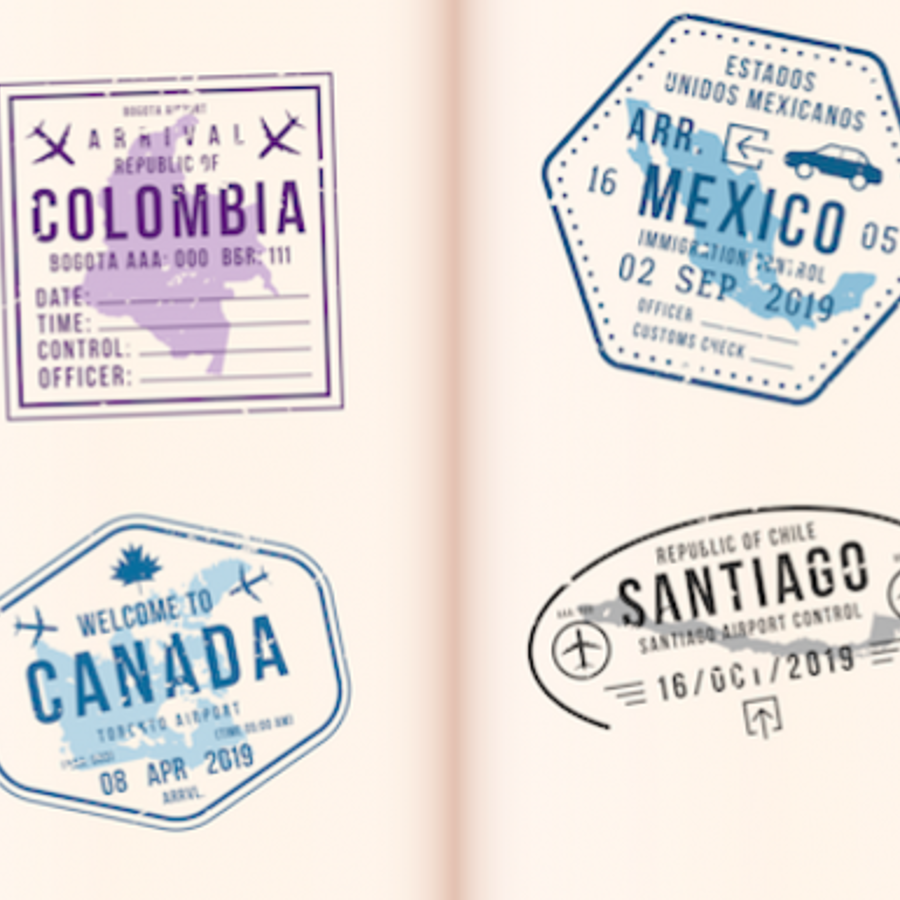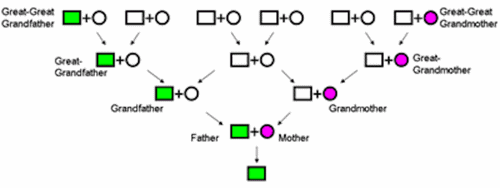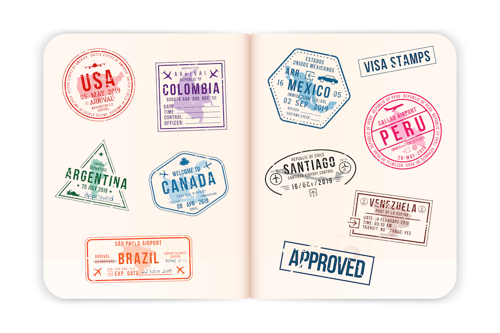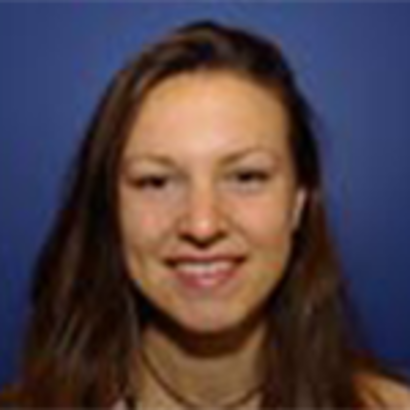
Is it possible to identify specific types of ancestry?
August 24, 2006

- Related Topics:
- Ancestry tests,
- Mitochondria,
- Y chromosome,
- Consumer genetic testing,
- Recombination
A curious adult from California asks:
"Is it possible to identify a racial origin such as Native American?"
Yes, there are actually many companies that sell DNA testing kits for figuring out your genetic ancestry. But buyer beware! Using DNA to identify ancestry is trickier than you may think.
Because of the DNA they use, most tests can only tell you about women on mom's side of the family and men on dad's. In other words, you are really only tracing back one line in your family tree.

Consider that each person has 256 ancestors in eight generations. Therefore each of these tests only tells you about one of these 256 ancestors. That's a lot of missing information!
Think for a minute about what this means. Imagine Sally's dad is Native American. She has an ancestry test done and they find no evidence of Native American heritage. Does this mean she isn't half Native American? Of course not.
It means that the test being used is very limited. The test can only "see" women on her maternal side -- it completely misses her dad. Why have scientists chosen such a limited test? Because it is the most straightforward one available.
Genetic Tests
The reason scientists can only see men on dad's side and women on mom's has to do with something called recombination. Recombination is a shuffling of DNA that happens with almost all of our DNA. And it confuses these sorts of ancestry tests greatly.
So scientists have focused on DNA that doesn't get shuffled. The two pieces of DNA that don't recombine are the Y chromosome and mitochondrial DNA (mtDNA). The Y chromosome gets passed from male to male. And the mtDNA passes from mom to children.
To understand why recombination can make things difficult, we need to go into a bit more detail about how these tests work.
Humans are genetically almost identical to one another. In order to tell different groups apart, we have to look at small sections of the DNA that tend to have a lot of differences. We call these regions "genetic markers".
Genetic markers are really just mutations or random DNA changes that happened in our past. Mutations don't happen very often. When they do, they are often caused by something in the environment or by our cells making a mistake as they are copying their DNA.
There is no one mutation that makes one ethnic group stand apart from the rest. Instead, we have to look at many of these markers and try to find a pattern that fits each ethnic group.
Genetic Markers are like Passport Stamps
Let's think of these markers as stamps on a passport, and the DNA as the traveler. Imagine there is a group of travelers that all begin traveling together. Their passports will start out looking exactly the same. Then, let's say they start to split up and travel on their own or in small groups to different countries. With time, each traveler will acquire new stamps of where they have been.
At the end you can look at all the passports. All the travelers should have the same stamps, up until they split from the group. You can then estimate how long it has been since each person was last in the group.

This is basically how we believe ethnic groups came about. All humans originally started out in one place, but then started splitting up. With time, each group can be considered a different ethnicity with a different set of hereditary markers.
One kind of "stamp" on DNA that is useful for genetic testing is an STR, which stands for "short tandem repeat." If you recall, DNA is a chain that is made up of four different kinds of chemicals called "nucleotides." These nucleotides are abbreviated A, T, C, and G. An STR is a site where the DNA code repeats itself, and the number of repeats varies from person to person.
If you were to look at the order of nucleotides around an STR, it would look something like:
… CTGCCAGTAGATCGATCGATCGATCCACG…
In this example, the repeating unit is "GATC" and there are 4 repeats.
… CTGCCAGTA | GATC | GATC | GATC | GATC | CACG…
Another person may have 8 repeats of this same unit:
… CTGCCAGTA | GATC | GATC | GATC | GATC | GATC | GATC | GATC | GATC | CACG…
If you look at enough places like this on the DNA, you would be able to figure out a pattern that best fits each ethnic group.
But if you only look at the Y chromosome or mitochondrial DNA, you only look at the men on dad's side or the women on mom's side.
DNA Recombination
In order to find out your entire genetic ancestry, you need to be able to look at the rest of your DNA (called autosomal DNA). So scientists are starting to look for differences in this other DNA that is found within certain ethnic groups. But this is way harder.
As I mentioned before, autosomal DNA recombines. That's a fancy genetic term for shuffling.
See, at birth you get half your DNA from your mother and half from your father. In fact, you get one of each chromosome from each parent.
But you don't get the exact same chromosomes from your mother. Her own two copies of chromosome 1 mix and match with each other first. Then you end up with a mix of both of her chromosome 1's. You also get a mix of her chromosomes 2-22 and her X chromosome as well.
Recombination ensures that you will be unique and that the human race will be diverse. But it creates a real problem for tracking ancestry.
Let's imagine our DNA as world travelers again. Imagine that before each traveler splits from the group, they exchange half of their passport pages with another person.
And then, they split them again. And again. It would then be really hard, after a few months, to tell when each person split!
Autosomal tests are definitely still a work in progress -- they are still not very accurate. At best, they can track back only a few generations.
So in sum, genetic testing may be able to help you determine your child's ancestry, but it won't be a tell-all.

Author: Natalie Dye
When this answer was published in 2006, Natalie was a Ph.D. candidate in the Department of Biochemistry, studying bacterial cytoskeletal proteins in Julie Theriot’s laboratory. Natalie wrote this answer while participating in the Stanford at The Tech program.
 Skip Navigation
Skip Navigation
